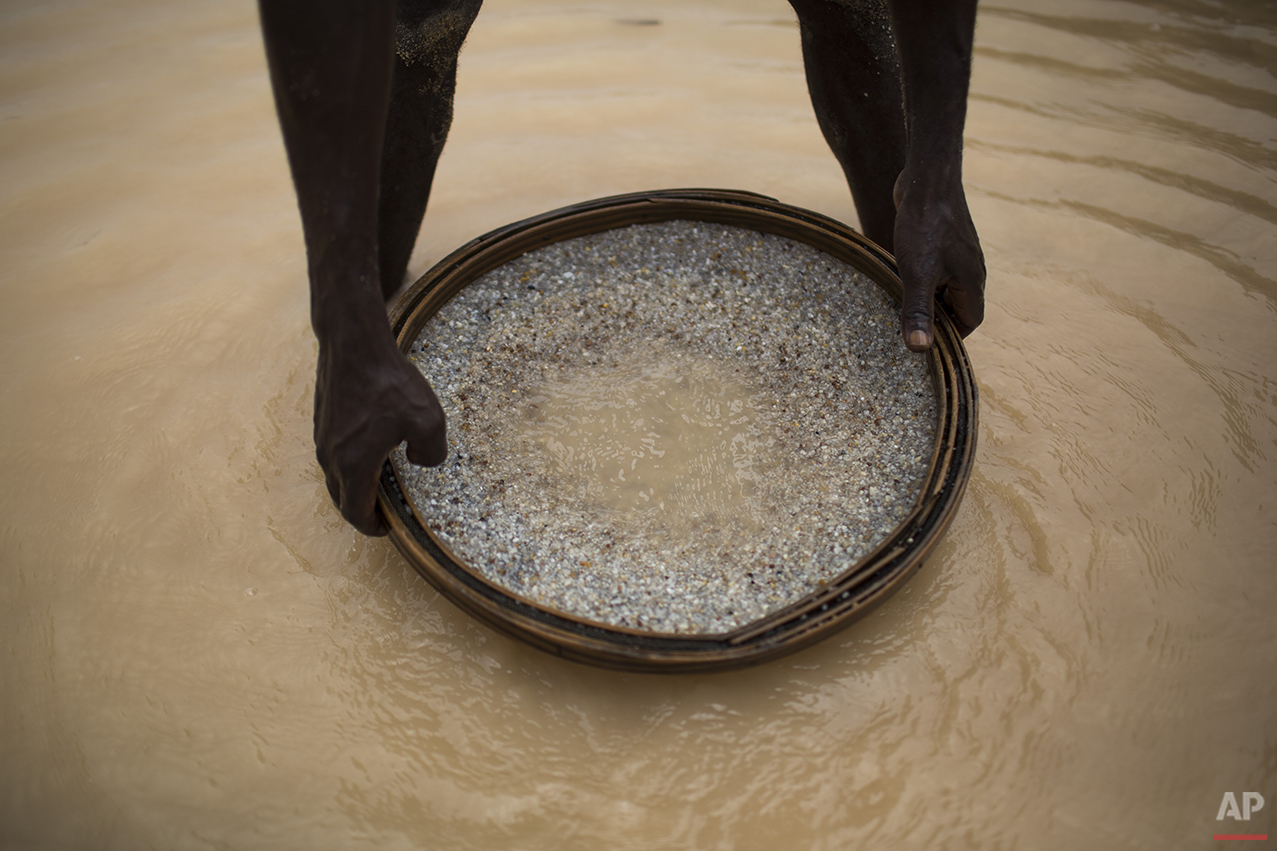Brazil's artisanal miners seek diamonds at abandoned mine

Far into the heart of Brazil's Minas Gerais state, rural miners explore the massive craters left behind by giant mining companies in search of diamonds.
Associated Press photographer Felipe Dana created a collection of images about the artisanal miners and their craft as a work project for the 2015 World Press Photo Latin America masterclass held in Mexico City in December.
The area that Dana documented has been explored for the precious stone since the time of slavery. Up to a few years ago, multinational mining companies extracted the stone without concern for the land or the Jequitinhonha River crossing the region.
Today the devastated area known as Areinha is a no man's land where small groups of rural miners try their luck with artisan techniques, using wooden knives, metal pans, large water pumps and no infrastructure.
In hopes of sparing the river any more damage, men and women searching for diamonds work around the riverbed as they try to legalize their mining activities with authorities.
Locals estimate there are hundreds of people across the region digging for diamonds in groups of 10 or less. They live in wooden huts without electricity and bathe with water in buckets, barely surviving without a stable income but on rare occasions enjoying a windfall of tens of thousands of dollars.
During the weeks-long mining process, the group excavates the soil down to a layer of gravel of up to 50 meters (yards) deep.
Rocks are extracted with the help of small pumps powered by old truck engines. The miners then use their hands to go through the rocks. If they're lucky, they'll find some diamonds.
Diamond mining sounds like a thing of the past to many Brazilians. But here, in areas that are hard to access, thousands of these artisanal miners survive and feed their families.
Text from the AP news story, Brazil's artisanal miners seek diamonds at abandoned mine.
See more photos on APImages.com
Follow Felipe Dana | Twitter | Instagram
Written content on this site is not created by the editorial department of AP, unless otherwise noted.
























